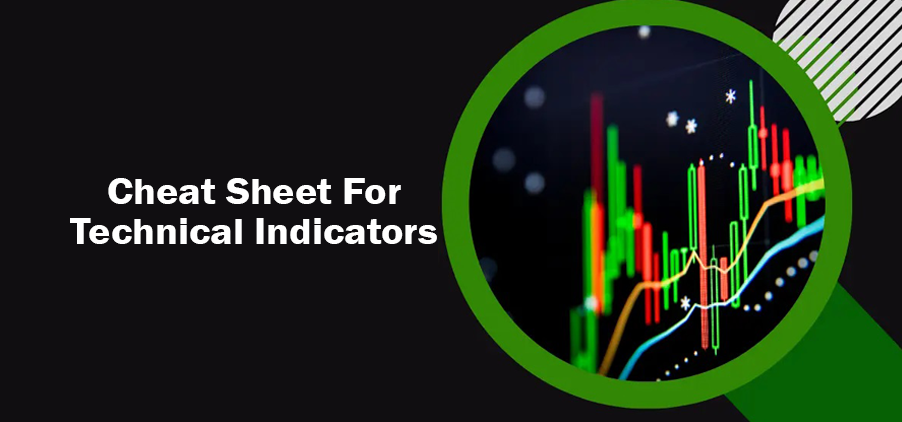In the dynamic world of trading, technical indicators serve as invaluable tools for navigating market fluctuations and making informed trading decisions. By analyzing price movements, volume, and other market data, technical indicators provide traders with insights into market trends, momentum, and volatility, enabling them to identify potential trading opportunities and risk management effectively.
Understanding Technical Indicators
Technical indicators are mathematical calculations based on historical price and volume data that are used to identify trends, reversals, momentum, and other patterns in the market. These indicators can be broadly categorized into four main groups:
1. Trend Indicators: These indicators help traders identify the overall direction of the market, whether it’s trending upwards, downwards, or sideways. Examples include moving averages, trendlines, and Moving Average Convergence Divergence (MACD).
2. Momentum Indicators: These indicators measure the rate of price change and help traders assess the strength of a trend or identify potential reversals. Examples include the Relative Strength Index (RSI), Stochastic oscillator, and Bollinger Bands.
3. Volatility Indicators: These indicators measure the degree of price fluctuations and help traders gauge market sentiment and potential risks. Examples include Average True Range (ATR) and volatility bands.
4. Volume Indicators: These indicators measure the amount of trading activity and provide insights into market sentiment and support or resistance levels. Examples include on-balance volume (OBV) and Accumulation/Distribution Indicator (ADI).
Using Technical Indicators to Develop a Trading Strategy
Technical indicators form the foundation of many momentum trading strategies and swing trading strategies, providing valuable signals and guidance for entry and exit points. By combining different technical indicators and understanding their individual strengths and weaknesses, traders can develop a personalized trading strategy that aligns with their risk tolerance and trading style.
1. Identifying Trends and Trend Reversals: Trend indicators can help traders identify the direction of the market and potential trend reversals. For instance, a moving average crossover can signal a change in trend, while a trendline break can indicate a momentum shift.
2. Determining Overbought and Oversold Conditions: Momentum indicators like RSI and Stochastic oscillator can help traders identify when a market is becoming overbought or oversold, indicating potential reversals or opportunities for mean reversion strategies.
3. Measuring Momentum and Volatility: Volatility indicators like ATR and volatility bands help traders gauge the level of risk in the market and make informed decisions about position sizing and stop-loss placement.
4. Assessing Volume and Market Sentiment: Volume indicators like OBV and ADI provide insights into market sentiment and can help traders identify areas of support or resistance, potential entry or exit points, and confirmation of breakout patterns.
Technical Indicators for Day Trading
Day traders, who execute trades within a single trading day, rely heavily on technical indicators to identify short-term trading opportunities. Scalping strategies, which involve taking quick profits on small price movements, often utilize momentum indicators to identify entry and exit points.
Technical Indicators for Forex Trading
Forex traders, who deal in currency pairs, use technical indicators to analyze the relative strength and weakness of different currencies. Specific indicators like the currency strength meter and the directional movement index (DMI) are commonly used in forex trading.
Learn More about Common Forex Mistakes involved in forex trading.
Technical Indicators for Crypto Trading
Cryptocurrency markets, with their unique characteristics and high volatility, require the application of technical indicators tailored to their dynamic nature. Indicators like the Chaikin Money Flow and the Fear and Greed Index are often used to assess market sentiment and potential trading opportunities in the crypto space.
Combining Technical Indicators with Fundamental Analysis
While technical indicators provide valuable insights into market movements, incorporating fundamental analysis, which focuses on the underlying economic and financial factors affecting the market, can provide a more comprehensive understanding of market trends and potential turning points.
Tips for Using Technical Indicators Effectively
To maximize the effectiveness of technical indicators, traders should adhere to the following guidelines:
- Avoid over-reliance on technical indicators: Technical indicators should be used as tools to guide trading decisions, not as absolute predictors of future price movements.
- Use technical indicators in conjunction with other trading tools: Combine technical indicators with other tools like chart patterns, price action analysis, and fundamental analysis for a more holistic view of the market.
- Backtest trading strategies before implementing them: Before risking real capital, test trading strategies using historical data to evaluate their performance and identify potential weaknesses.
- Continuously learn and improve your technical analysis skills: The world of trading is constantly evolving, so traders should stay up-to-date with new technical indicators, trading strategies, and market trends.
Conclusion
Technical indicators offer traders a powerful toolkit for navigating market fluctuations and making informed trading decisions. By understanding the different types of technical indicators and their applications, traders can develop personalized trading strategies that align with their risk tolerance and trading style. However, it’s crucial to remember that technical indicators are not foolproof and should be used in conjunction with other trading tools and fundamental analysis for a comprehensive approach to market analysis and trading decision-making.
